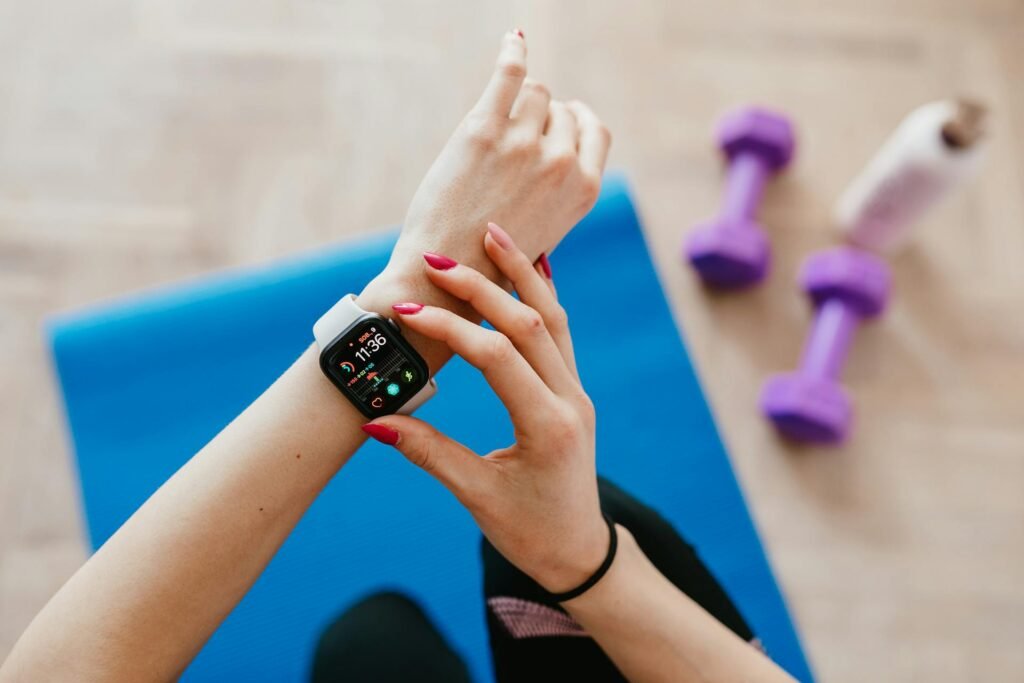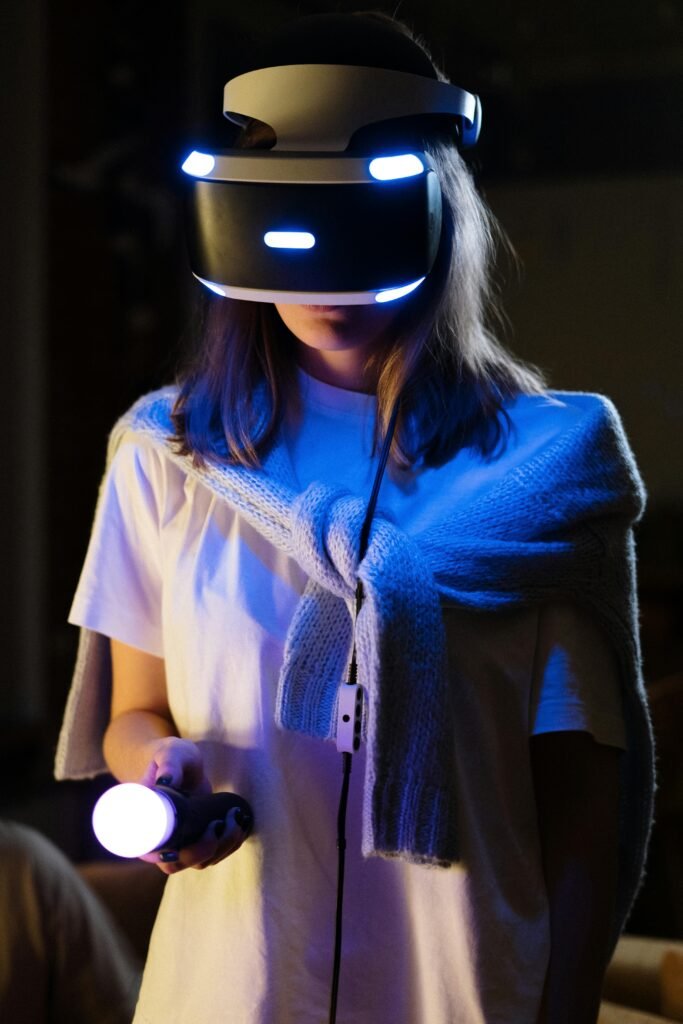
Table of Contents
In the ever-evolving landscape of healthcare, a silent revolution is taking place—one that wraps around our wrists and integrates seamlessly into our daily lives. Wearable technology, once a futuristic concept, has now become a ubiquitous part of our health and wellness routines. The rise of wearable tech is not just a triumph of innovation; it’s a testament to our relentless pursuit of a healthier, more informed existence.
As we stand on the brink of 2024, the impact of these devices is palpable. From fitness trackers that monitor our every step to smartwatches that keep a vigilant eye on our heart rhythms, wearable technology is redefining the boundaries of healthcare. It empowers individuals to take proactive control of their well-being, helps in unwinding the mind, offers medical professionals new avenues for monitoring patient health, and provides researchers with unprecedented data to unlock the mysteries of the human body.
This article, “On Your Wrist and in Your Health: The Rise of Wearable Health Devices”, delves into the heart of this technological marvel. We will explore how wearable devices have evolved from simple gadgets to sophisticated health monitors, the benefits they bring to individual health management, and the challenges they present in terms of data privacy and device accuracy. Join us as we unravel the story of wearable technology—a story that’s being written on the canvas of our skin and the rhythm of our pulse.
The Evolution of Wearable Health Devices
The journey of wearable health technology is a fascinating tale of innovation, stretching from rudimentary devices to sophisticated tools that have become integral to our health and well-being.
Early Beginnings: The concept of wearable technology is not new. It dates back to the 13th century with the invention of eyeglasses, enhancing vision and improving the quality of life for millions. In the 1960s, the creation of the pedometer marked a significant milestone, allowing individuals to measure physical activity and laying the groundwork for future advancements.
The Smartwatch Surge: The release of the Fitbit Classic in 2009 marked the beginning of the modern era of health wearables. This device could be clipped onto a waistband and tracked steps, distance, sleep, and estimated calories burned. It was a pioneer that set the stage for the explosion of wearable devices in the marketplace.
Medical-Grade Devices: As technology progressed, wearables began to incorporate more advanced features, such as heart rate monitors and GPS tracking. The introduction of the Apple Watch and other similar devices brought health monitoring to the masses. These gadgets received regulatory approval for medical use, allowing them to serve as tools for health professionals and patients alike.
AI-Powered Platforms: The integration of artificial intelligence has been a game-changer for wearable health technology. AI algorithms analyze the vast amounts of data collected by these devices, providing personalized health insights and early detection of potential health issues.
Telemedicine Integration: Wearable devices have become a cornerstone of telehealth, offering remote patient monitoring and facilitating virtual consultations. They enable healthcare providers to track patients’ health metrics in real-time, making it easier to manage chronic conditions and provide timely interventions.
Consumer-Grade Devices: Today, wearables are not just for athletes or tech enthusiasts. They are widely available and used by people from all walks of life. These devices have become more user-friendly, affordable, and packed with features that cater to a variety of health needs.
Current Trends in Wearable Health Technology

The realm of wearable health technology is rapidly advancing, with new trends emerging that promise to further integrate these devices into our daily lives and healthcare systems.
Health and Wellness at the Forefront: The focus on health and wellness has never been more pronounced. In the wake of the COVID-19 pandemic, the demand for real-time health monitoring and early detection of potential health risks has surged. Today’s wearables go beyond basic fitness tracking; they are equipped with sensors capable of monitoring oxygen levels, heart rate, and even stress levels, serving as personal health assistants that encourage healthier lifestyle choices.
Smart Clothing Enters the Scene: The fusion of technology and fashion has given rise to smart clothing. These garments are embedded with electronics that capture biometric data, offering a new level of convenience and functionality. From shirts that monitor vital signs to shoes that track physical activity, smart clothing is set to revolutionize the way we interact with wearable tech.
The Influence of IoT: The Internet of Things (IoT) has extended its reach into the wearable tech sphere, creating an interconnected ecosystem of devices. This integration allows wearables to communicate with other smart devices, enhancing user experiences by enabling control over various aspects of the home environment through simple commands from a wristwatch or ring.
AI Integration: Artificial Intelligence (AI) has become a pivotal component in wearable technology. AI’s ability to process and analyze the vast amounts of data collected by wearables has led to more accurate health insights and predictions, making these devices not just trackers but also potential lifesavers.
Data Management Challenges: As wearable devices grow more sophisticated, they generate an immense amount of health data. This presents a significant challenge for health systems, which must tackle issues related to data management, software integration, and security settings to fully harness the benefits of wearable tech.
Market Growth and Device Diversity: The market for wearable healthcare devices is expected to approach $70 billion by 2028, with a diverse range of devices available. From medical-grade monitors for clinical decision-making to consumer-grade wearables for everyday use, the options are expanding, making wearable tech accessible to a broader audience.
Conclusion: The current trends in wearable health technology reflect a dynamic and rapidly evolving field. As we continue to embrace these devices, they will play an increasingly vital role in health management, disease prevention, and the overall enhancement of our quality of life.
Benefits of Wearable Technology in Healthcare
The integration of wearable technology into healthcare has brought about a myriad of benefits that are transforming the patient experience and the medical field as a whole.
Personal Health Monitoring: Wearable devices offer continuous health monitoring, which is particularly beneficial for patients with chronic conditions. By tracking vital signs like heart rate, blood pressure, and glucose levels, these devices can alert users to potential health issues before they become serious, promoting early intervention1.
Encouraging Healthy Habits: Wearables play a significant role in promoting healthy lifestyles. They provide users with real-time data on their physical activity, sleep patterns, and nutrition, encouraging them to make healthier choices. Features like step counting and activity reminders help users stay active and achieve their fitness goals.
Just-In-Time Coaching: Many wearable devices come with built-in coaching functions that offer personalized guidance on exercise, diet, and wellness. This feature is particularly useful for habit formation, providing users with timely advice and motivation to maintain healthy behaviors2.
Remote Patient Care: Wearable technology is a cornerstone of telehealth, enabling remote patient care. Physicians can monitor their patients’ health data from afar, making it easier to manage chronic diseases and reduce the need for in-person visits, which is especially valuable in rural or underserved areas3.
Data-Driven Decision Making: The wealth of data generated by wearables can be used by healthcare providers to make informed decisions about patient care. This data can reveal patterns and trends that might not be apparent during traditional clinical assessments, leading to more personalized and effective treatment plans3.
Affordability and Accessibility: Wearable health devices are becoming increasingly affordable and accessible, making them available to a wider population. This democratization of health monitoring tools means that more people can take an active role in managing their health, regardless of their socioeconomic status2.
Conclusion: The benefits of wearable technology in healthcare are clear and impactful. As these devices continue to evolve, they will undoubtedly play an even more significant role in improving health outcomes, enhancing patient care, and empowering individuals to take control of their health journey.
Challenges and Considerations in Wearable Health Devices
While wearable health technology offers numerous benefits, it also presents several challenges and considerations that must be addressed to ensure its effective and ethical integration into healthcare.
Data Quality and Accuracy: One of the primary concerns with wearable devices is the accuracy of the data they collect. Ensuring that the data is reliable and precise is crucial for both personal health decisions and clinical applications. Inaccurate data can lead to misdiagnoses or inappropriate health advice.
Interoperability and Integration: The ability of different wearable devices and health systems to work together seamlessly, known as interoperability, is another significant challenge. Effective integration of wearables into existing healthcare infrastructures is necessary to maximize their potential benefits.
Health Equity and Accessibility: Wearable technology should be accessible to all individuals, regardless of socioeconomic status. Addressing disparities in access to these technologies is essential to avoid exacerbating existing health inequities.
Privacy and Security: The personal health data collected by wearables is sensitive and must be protected. Users must have confidence that their data is secure and that privacy is maintained. Addressing cybersecurity risks and ensuring user consent are paramount.
User Engagement and Retention: Maintaining user engagement with wearable devices over time is a challenge. Devices must be designed to be user-friendly and provide meaningful insights to encourage long-term use.
Regulatory and Ethical Considerations: As wearables become more advanced, they raise regulatory and ethical questions. Ensuring that these devices comply with medical regulations and ethical standards is critical for their acceptance and trustworthiness.
The challenges and considerations associated with wearable health devices are complex and multifaceted. Addressing these issues requires collaboration among stakeholders, including device manufacturers, healthcare providers, regulators, and users. By overcoming these challenges, we can unlock the full potential of wearables to enhance healthcare delivery and patient outcomes.
The Future of Wearable Health Technology

As we look ahead, the future of wearable health technology is poised to be as transformative as it is innovative. The convergence of advancements in various fields is set to redefine how we interact with our health on a daily basis.
Smart Clothing and E-Textiles: The next wave of wearable technology will likely see the rise of smart clothing and e-textiles. These garments will be embedded with sensors that can track a wider range of health metrics, providing more comprehensive health data. Imagine a shirt that not only tracks your heart rate but also your respiratory rate and muscle activity, offering a holistic view of your physical state.
Advanced Sensors and Diagnostics: Future wearables will boast even more advanced sensors capable of diagnosing health conditions in real-time. These devices will not only monitor health but also predict and prevent potential issues before they arise, acting as an early warning system for the wearer.
Augmented Reality (AR) Integration: Augmented reality is expected to play a significant role in wearable health technology. AR glasses could provide users with real-time health stats and information, overlaying data onto their field of vision, making health management an immersive experience.
Personalized Health Insights: With the aid of artificial intelligence, wearable devices will offer highly personalized health insights. They will be able to analyze your health data in the context of your personal history and genetic makeup, offering tailored advice and recommendations.
Seamless Integration with Medical Care: Wearables will become more seamlessly integrated with healthcare systems, allowing for real-time communication between patients and healthcare providers. This will enable more proactive and personalized medical care, with wearables acting as a bridge between the patient and the medical team.
Ethical and Regulatory Evolution: As wearable technology becomes more sophisticated, ethical and regulatory frameworks will need to evolve to keep pace. Issues such as data ownership, privacy, and consent will become even more critical, and new standards will be established to protect users’ rights.
Conclusion: The future of wearable health technology is bright and full of potential. As we continue to innovate and push the boundaries of what’s possible, wearables will become an even more integral part of our health and well-being. They will empower us with knowledge, connect us with healthcare providers, and provide a level of personalized care that was once unimaginable.
Conclusion: The Uncharted Horizons of Wearable Health Technology
As we draw the curtains on our exploration of wearable health technology, we stand at the precipice of a new era in healthcare—one where the lines between technology and biology blur into a harmonious symphony of data-driven wellness. The advancements we’ve discussed are not mere speculations; they are the seeds of a future that is rapidly taking root.
The potential of wearable technology to revolutionize healthcare is immense, and yet, what we’ve seen so far may just be the tip of the iceberg. With each passing day, new discoveries and innovations are pushing the boundaries of what we thought possible. The question is no longer if wearable technology will transform healthcare, but how far and how deep this transformation will go.
Imagine a world where your watch not only tells you the time but also predicts your health risks. Envision clothing that adjusts to your body’s needs, administering medication or altering its temperature to improve your well-being. Contemplate a future where healthcare is not just personalized but predictive, preventive, and profoundly empowering.
As we look to the horizon, one thing is clear: the journey of wearable health technology is far from over. It is a journey that promises to redefine our understanding of health, wellness, and the very fabric of medical care. So, as you unstrap your smartwatch tonight, remember that you are partaking in a historical shift—a shift that will shape the health of generations to come.
Stay tuned, stay healthy, and stay curious, for the future is on your wrist.
Frequently Asked Questions (FAQs)
How accurate are wearable health trackers? Wearable health trackers have significantly improved in accuracy over the years. However, while they are quite reliable, they should not be used as a substitute for professional medical devices.
Can wearables replace traditional health check-ups? While wearables provide valuable health insights, they are not a replacement for traditional health check-ups with a healthcare professional.
Are wearables suitable for all age groups? Yes, wearables are designed to be user-friendly and can be beneficial for all age groups, from children to the elderly, for monitoring various health aspects.
How do wearables impact privacy and data security? Wearables collect personal health data, which raises concerns about privacy and data security. It’s important for users to understand how their data is used and protected.
What should I consider when choosing a wearable for health tracking? When selecting a wearable, consider the device’s features, accuracy, battery life, compatibility with other devices, and how it handles data privacy.
How will wearable technology evolve in the next decade? The future of wearable technology is likely to include more advanced sensors, integration with augmented reality, and even smarter AI-driven health insights.
Can wearable devices detect serious health conditions? Some wearable devices are now capable of detecting serious health conditions like atrial fibrillation or sleep apnea, but they should complement, not replace, medical advice.
Will insurance companies use data from wearables? There is a growing interest in using data from wearables for health insurance purposes, but this also raises questions about privacy and data ownership.

